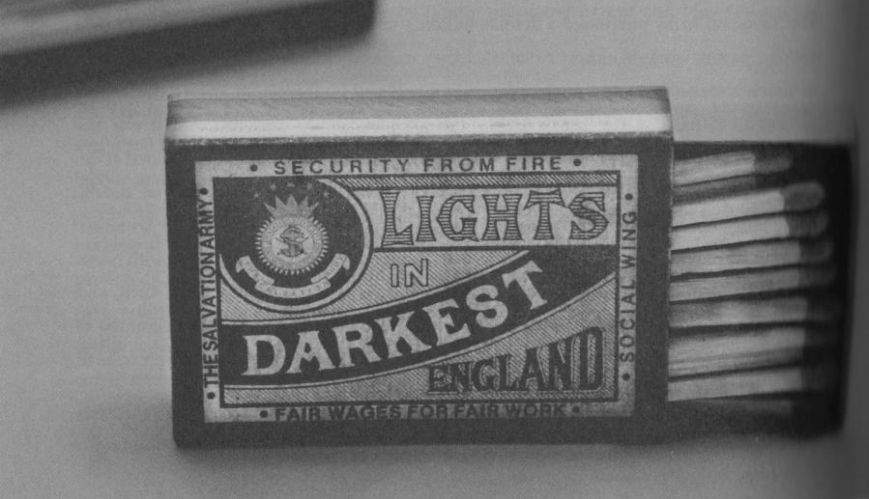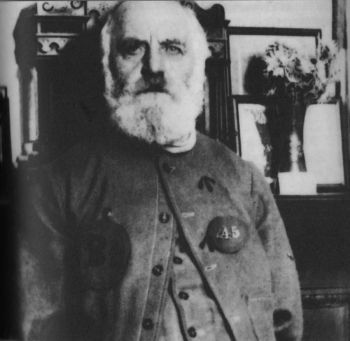The rise of Catherine: from 'maiden tribute' to the 'match girls'

The rise of Catherine: from 'maiden tribute' to the 'match girls'
Catherine Booth’s role in shaping The Salvation Army as both an evangelical and social mission-focused movement cannot be downplayed.
The “maiden tribute” campaign was probably the most sensational British tabloid story of the late 19th century.
It was centred on the scandal of widespread child prostitution. The age of consent in England had remained fixed for more than 500 years, at 12. For pov- erty-stricken families in the desperately overcrowded slums of industrial England, the sale of children into the sex trade could be a last desperate bid to survive. Eventually, in 1875, the age was raised by one year, to just 13. To reformers, Catherine Booth (pictured left) among them, this seemed only to confirm the reality and evil of the trade.
The issue was also close to the heart of Anglican feminist and reformer Josephine Butler, who had drawn Catherine into the campaign to change the Contagious Diseases Act. In this new campaign, their efforts were facilitated by leading journalist and editor of London’s Pall Mall Gazette, W.T. Stead (pictured right). 
In 1885, Stead came up with what could be described as perhaps the first newspaper “sting” operation. His intent was to expose this whole trade by setting up a front for a brothel and arranging to purchase a young girl. To oversee the scheme a small committee of leading citizens, including the Roman Catholic Cardinal Henry Manning, was established. Much of the organisation of the “sting” was undertaken by Stead and Catherine’s son, Bramwell Booth. To execute the operation, they enlisted the service of a reformed brothel keeper, Rebecca Jarrett.
Jarrett was set up as a procuress and arranged for the purchase of 13-year-old Eliza Armstrong for five pounds from her alcoholic mother, with the mother’s full consent that the girl would be put in a brothel. Stead was there, in hiding, recording the entire transaction.
The young girl was then taken to another room where a Salvation Army matron spirited her away to a place of safety. Stead then published the entire account in the Pall Mall Gazette under the headline, “Maiden Tribute in Modern Babylon”. Such was the sensation that it is said the young George Bernard Shaw raced down to Stead’s office, grabbed as many copies of the newspaper as he could and went out to distribute them. Society was in uproar.
Up to this point, Catherine and Bramwell Booth were the key Salvationist participants in the project. As soon as the story broke in the Pall Mall Gazette, Catherine’s husband, William Booth, swung the public efforts of The Salvation Army behind the collection and presentation of a massive petition to Parliament of 393,000 signatures calling for change in the law. They succeeded and the age of consent was raised to 16. Young girls were protected.
Through the 1880s, Catherine continued to develop her views about The Salvation Army and its purpose. The following quote gives a terrific insight into her thinking at the time: “A barracks is meant to be a place where real soldiers would be fed and equipped for war, not a place to settle down in or a comfortable snuggery to enjoy ourselves,” she stated. “I hope that if ever they, our soldiers, do settle down, God will burn their barracks over their heads!”
This is a woman who wasn’t prepared to stop.
In 1888, Catherine once again joined forces with W.T. Stead and others, including Annie Besant, one of the founders of Theosophy, and Emmaline Pankhurst, the great campaigner for women’s suffrage, in a crusade against “White Slavery in London”. It was to lead to 1400 women taking strike action against the poor wages and appalling conditions under which the “match girls” of London were forced to work. Most horrifically, the matches were made with poisonous yellow phosphorous, leading death. Midway through the campaign Catherine herself became ill and was diagnosed with breast cancer.
Through this period, William’s ideas on social reform had also been developing. His thinking was made public in 1889 in an article he called “Salvation for Both Worlds”. He wrote: “As Christ came to call not saints but sinners to repentance, so the New Message of Temporal Salvation, of salvation from pinching poverty, from rags and misery, must be offered to all.”
As Catherine’s illness confined her to home, William began to work on a coherent vision of “Temporal Salvation”. Stead, who had become close to Catherine and William, came alongside to assist. According to one account, William set up a study outside Catherine’s bedroom where he and Stead would work on the manuscript and William would take their notes in to Catherine for discussion and correction.
Booth’s book, In Darkest England and the Way Out, was published in October 1890, the same month Catherine was promoted to glory. The book was a comprehensive plan for social reform of British society and transformation of the wider world. It rapidly became the subject of controversy, with some even suggesting the real author was not Booth, but Stead. But even here, Catherine’s voice can be heard. In one of the first and most successful ventures of the “In Darkest England” campaign, the Army purchased a match factory, changed the method of manufacture, and raised the worker’s wages. By 1901, the match industry was transformed. The Match Girls had won.
Today, the “Lights in Darkest England” campaign, as it became known, also raises the question as to what extent the whole of “In Darkest England” is underpinned by Catherine’s social and theological worldview? John Read, in his recent study of Catherine Booth, says not only was Catherine “a powerful advocate for social reform”, she was also, “the visionary thinker whose ideas inspired the movement’s radical departures from churchly norms, and the principal architect of the Army’s theology”.
Catherine Booth’s role in shaping The Salvation Army as both an evangelical and social mission-focused movement cannot be downplayed. She was a woman ahead of her time, and her partnership with fiery evangelist William was a true union of heart, mind and spirit. The question for us may be, how much of the Army’s future depends on a recovery of that spirit?
Read part one of this feature.
John Cleary is a prominent Australian broadcaster and Salvation Army historian.